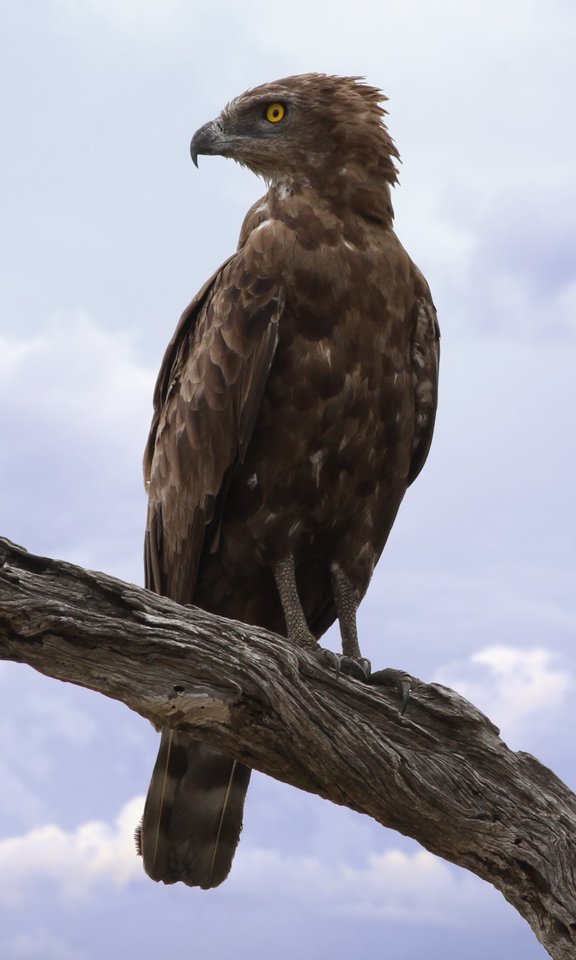The brown snake eagle (Circaetus cinereus) is a large bird of prey found in sub-Saharan Africa, with a wingspan ranging from 160 to 185 cm (5 ft 3 in to 6 ft 1 in) and a weight between 1.5 and 2.5 kg (3.3 and 5.5 lb). It is the largest member of the Circaetus genus, but has a relatively small wing spread compared to other eagles. The brown snake eagle is known for its specialized diet, primarily consisting of snakes, including venomous species.
The Exact Brown Snake Eagle Population
The brown snake eagle is classified as a least concern species by the IUCN, but it is considered uncommon in most areas. The exact population size is not well-known, but it is estimated to be in the range of 10,000 to 100,000 mature individuals. The species is widely distributed across sub-Saharan Africa, but its population is believed to be declining due to habitat loss and degradation.
Habitat Preferences and Distribution
 Image source: Brown snake eagle By Derek Keats
Image source: Brown snake eagle By Derek Keats
The brown snake eagle prefers open woods and wooded savanna, most often preferring areas where gulley or wooded hillocks break up flat areas. It can be found at elevations ranging from sea level to 2,000 m (6,600 ft) high. The species is more common in certain habitat types, such as dry woodlands, thorn and broad-leafed savannas, and tends to avoid more arid steppe and grassland habitats. It can also sometimes be seen near farmlands or at the edge of urban areas.
Feeding Habits and Adaptations
The brown snake eagle is an almost obligate predator of a variety of snakes, and it spends a lot of time perched in a tall or exposed tree or on an electricity pylon, waiting for its prey. It has a relatively long tail that is marked with four whitish bars, and adults have yellow to orange-colored eyes. The bird’s heavily scaled tarsi, or legs, are an adaptation to help keep them safe when hunting venomous snakes.
Breeding and Nesting Behavior
The brown snake eagle is a solitary bird with a prolonged breeding cycle and raises a single eaglet. Although it is not migratory, it may be nomadic, with cases of birds traveling up to 200 km (120 mi) apart, and ringed birds have been known to travel 2,100 km (1,300 mi) away.
Threats and Conservation Status
Habitat destruction is likely having a negative effect on the brown snake eagle population, as it prefers open woods and wooded savanna. The species is classified as a least concern species by the IUCN, but it is considered uncommon in most areas. Conservation efforts are focused on protecting the species’ habitat and monitoring its population trends.
Interesting Facts about the Brown Snake Eagle
- The brown snake eagle is the largest member of the Circaetus genus, but has a relatively small wing spread compared to other eagles.
- It has natural protection against snake bites, with thick-skinned legs.
- The brown snake eagle’s call is a hoarse, guttural hok-hok-hok-hok, usually uttered in territorial displays at conspecifics and sometimes culminating in a crowing kaaww.
- Pairs also call a soft kwee-oo probably as a contact call at the nest.
Conclusion
The brown snake eagle is a fascinating and unique bird of prey found in sub-Saharan Africa. While its population is classified as least concern, it is considered uncommon in most areas due to habitat loss and degradation. Understanding the species’ habitat preferences, feeding habits, and breeding behavior is crucial for its conservation and protection.

